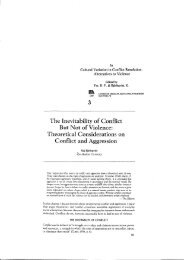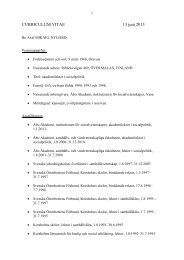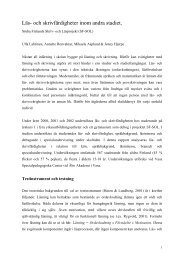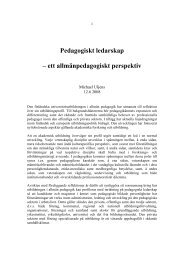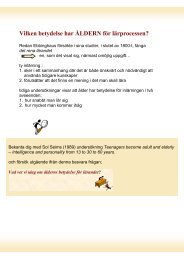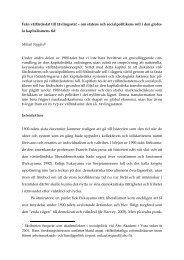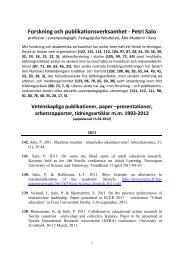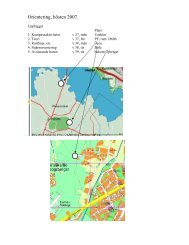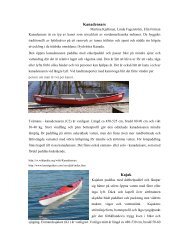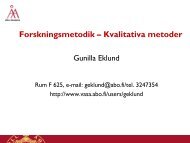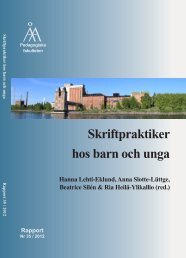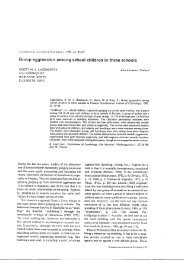Parties, Candidates and Citizens On-Line - Åbo Akademi
Parties, Candidates and Citizens On-Line - Åbo Akademi
Parties, Candidates and Citizens On-Line - Åbo Akademi
Create successful ePaper yourself
Turn your PDF publications into a flip-book with our unique Google optimized e-Paper software.
spur innovative <strong>and</strong> lively on-line activity beyond the major parties <strong>and</strong> c<strong>and</strong>idates (cf.<br />
Cunha et al. 2003, 70; Gibson 2004; Norris 2003). Among these, both the fragmented<br />
multiparty system (Raunio 2002), the open media environment (Moring 1995) as well as<br />
the campaign culture which stresses the role of the individual c<strong>and</strong>idates (Ruostetsaari &<br />
Mattila 2002), was mentioned in the introduction to the thesis. Regardless of these, the<br />
findings of the articles indicate that the on-line political environment in Finl<strong>and</strong> could<br />
tentatively be described by the prediction of Margolis <strong>and</strong> Resnick (2000, 74):<br />
“mainstream politics are likely to dominate the WWW”.<br />
2.1.2. What the political actors are doing with their websites<br />
The websites of the Finnish parties prior to the 2006 Presidential election were analyzed<br />
in the third of this thesis’ articles (Str<strong>and</strong>berg 2007). Concerning websites, both the topdown<br />
<strong>and</strong> bottom-up communication potential of the internet was stressed in the<br />
introduction to the thesis. Additionally, as mentioned, Finl<strong>and</strong>’s internet penetration rate<br />
<strong>and</strong> several contextual features were argued to be favourable to a dynamic <strong>and</strong> innovative<br />
use of political websites. The findings of the third article generally showed that the<br />
Finnish parties did not make full use of the internet’s potential, <strong>and</strong> mainly used their<br />
websites for top-down information dissemination. These findings are quite similar to<br />
those reported in other countries (e.g. Kamarck 1999). It appears as if the Finnish actors<br />
mainly use the internet to supplement other forms of campaigning. The parties focused<br />
on internal information <strong>and</strong> general campaign information. They provided website users<br />
with few opportunities for bottom-up communication. The article also yielded an<br />
interesting result pertaining to the theories of normalization <strong>and</strong> equalization; compared<br />
to parties outside the parliament, the parties in parliament provided significantly more<br />
internal <strong>and</strong> external information, <strong>and</strong> more opportunities for user participation, in a<br />
more sophisticated website package. Thus, as Finnish parties, to a significant degree,<br />
receive organizational funding based on their share of the seats in parliament (Nousiainen<br />
1998, 72-73), this arguably gives support to the normalization theory (cf. Margolis &<br />
Resnick 2000, 16; Margolis et al. 2003, 58). The Finnish parties with more resources are<br />
edging in front of those with fewer resources, both on- <strong>and</strong> off-line.<br />
Corresponding findings were brought to attention in the fourth article focusing on<br />
the Finnish c<strong>and</strong>idates’ campaign websites prior to the 2003 Parliamentary elections<br />
(Str<strong>and</strong>berg 2006a). The c<strong>and</strong>idates primarily used their websites for top-down<br />
information dissemination <strong>and</strong> for networking through hyperlinks, but not for promoting<br />
user participation. In spite of the rather individualistic campaign culture (cf. Gibson<br />
2004), few c<strong>and</strong>idates made extensive use of the opportunities the medium provides. The<br />
article also gave support to the normalization theory. Two separate regression models<br />
172



